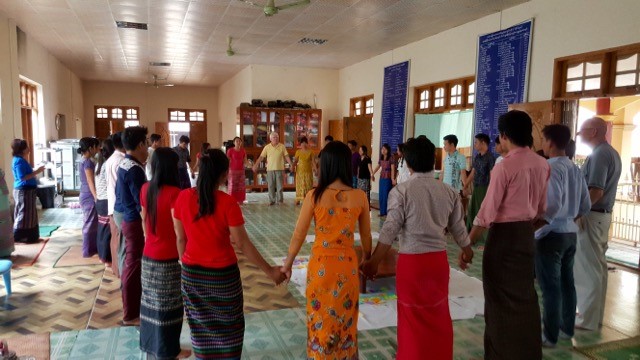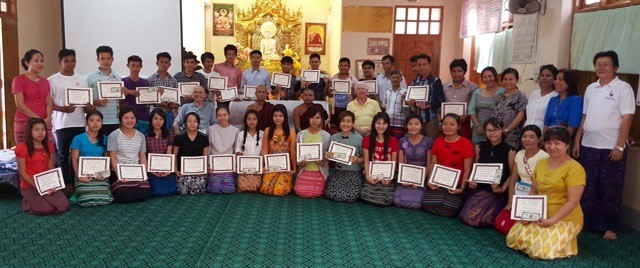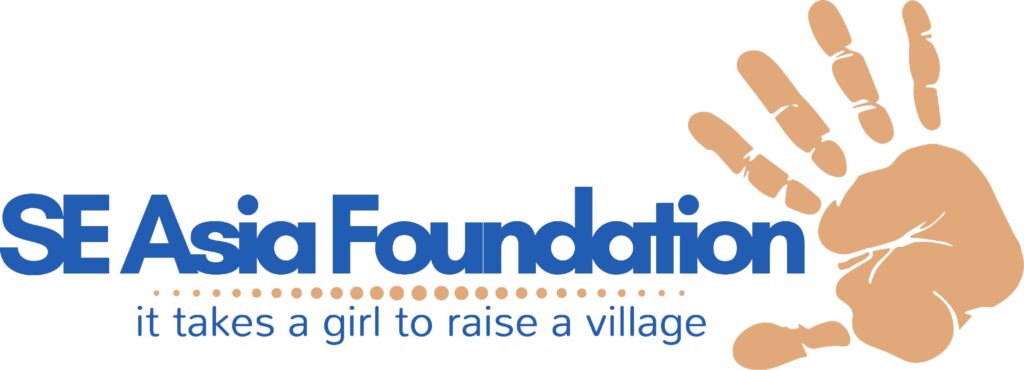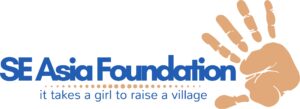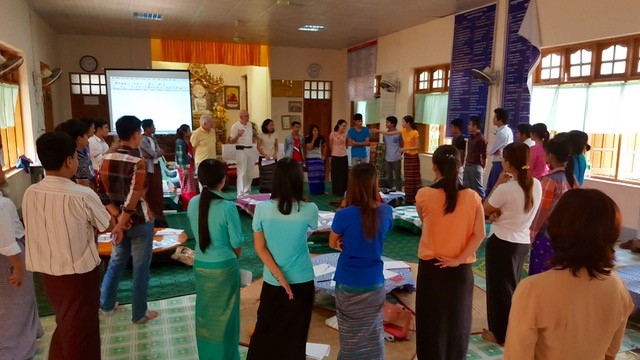
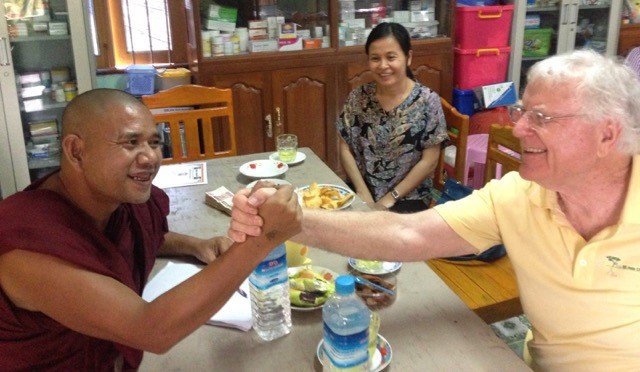
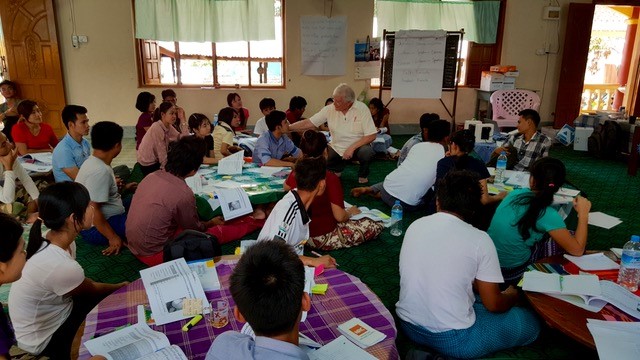
Now to put this in perspective one must recall that Myanmar (Burma) was a rigidly governed British colony for a very long time. In fact, Burma, per se, did not even exist as the Burma we know today until the British in the early 1800s consolidated the myriad ethnic groups and the vast geography into their hard-won colony. The buildup to World War Two brought in Japanese rule in hopes that would be better than the British domination. As we know, that did not turn out to be the case at all. Then, following WWII, a succession of failed attempts at governance, and an ongoing time of civil war among the disparate ethnic minority groups, led to a military dictatorship rising to power. Only now in the last couple of years, thanks to the leadership of Aung San Suu Ky and others, have these fine people in Myanmar experienced anything close to the freedom and democracy that we take for granted.
Needless to say, the group Peter and I were with, having grown up in an environment of very tight and restrictive government control, was hungry for some practical coaching about leadership and how they could put their university educations, along with their fierce desire to improve conditions in one of the most undeveloped countries in the modern world, to practical use. And since almost all of these young men and women were currently working (or volunteering) in universities, monasteries, and a wide variety of social service organizations, their interests were in close alignment with ours for the SE Asia Foundation.
Our four days together flew by as we explored leadership in a social service setting, the personal qualities of effective leaders, and important communication skills. In fact, we spent at least one full day on effective communication.
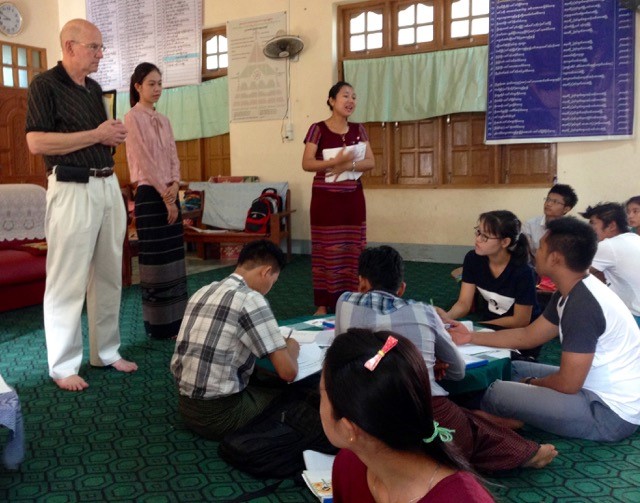
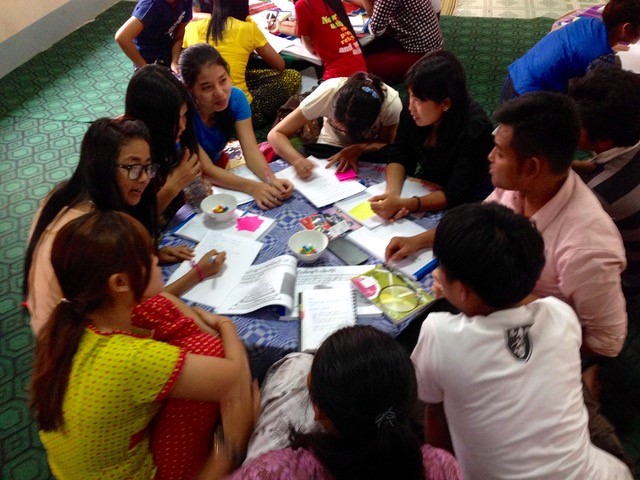
As we approached our fourth and final day with these energetic young people Peter and I decided to see if we could sharply focus the power of this dedicated group. So we taught the skills of brainstorming. Once they became comfortable with that notion, they brainstormed an important topic, namely: “What can we do together as a group to continue to growing as the future leaders of Myanmar.”
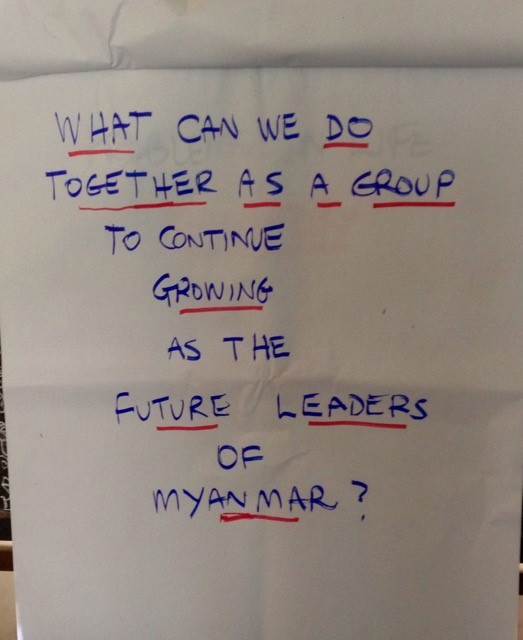
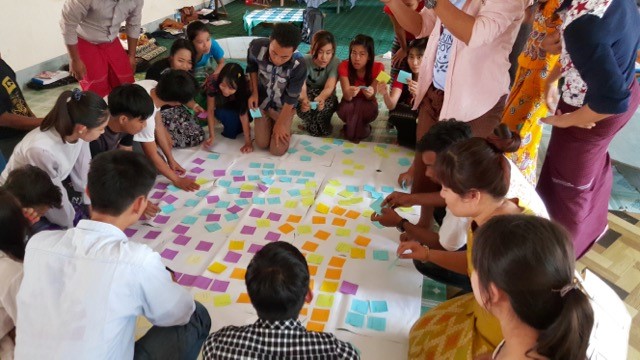
They came up with way more than a hundred ideas. Then they consolidated all those ideas into categories such as “networking”, “communications”, “more education”, and the like. We showed them multi-voting. With this technique, they quickly picked the three highest priority items for further work and action planning.
Using the techniques of S-T-P (Situation, Target, Proposal) they worked in three groups of 10 or 11 to develop actions plans. They did a great job.
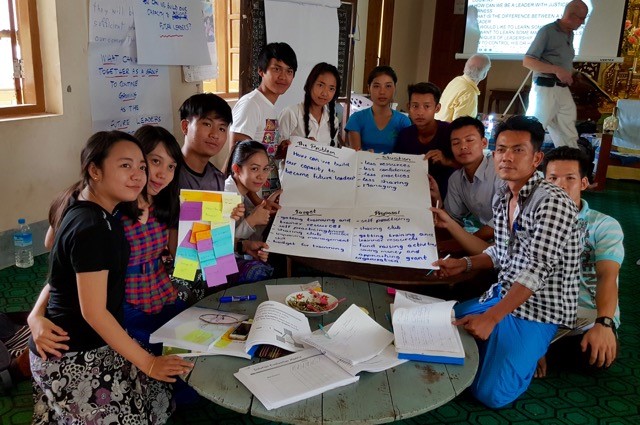
We ended the day in a circle of appreciation, commitment, and connectedness. Yes – we are connected. No question about that.
